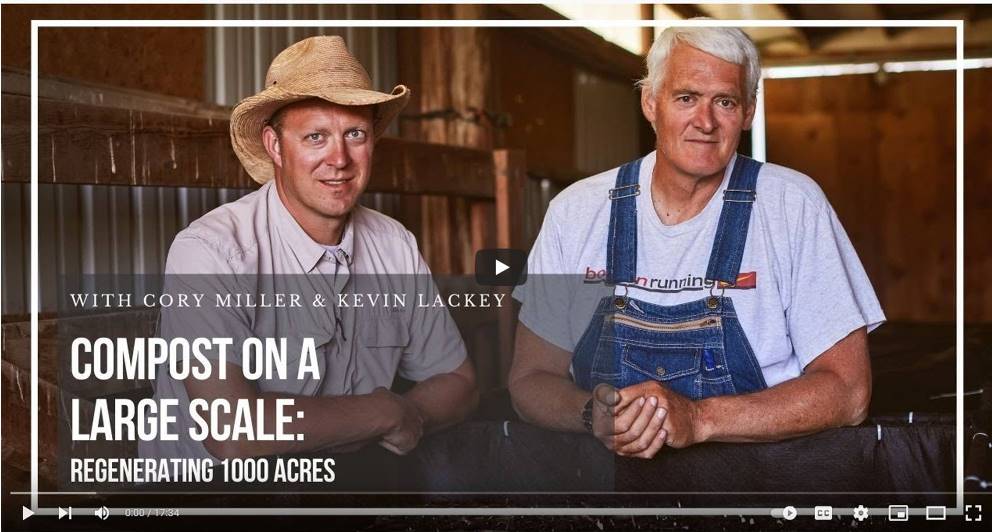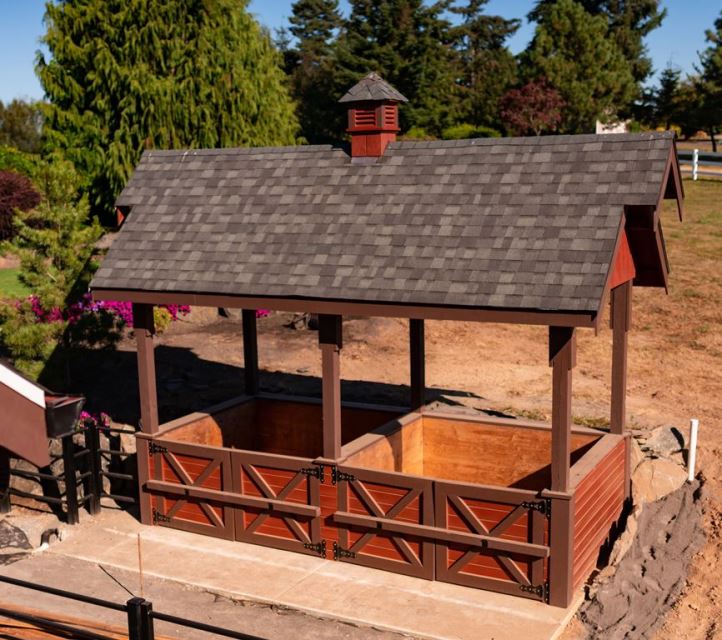September 2022 Newsletter

"Manure Math"
Designing an Appropriately Sized O2Compost System
The first step in designing a new O2Compost System is to estimate the volume of manure and stall bedding that is generated on roughly a monthly basis. A recent client referred to this as doing the “Manure Math” which I thought had a great ring to it. This is how I do it ...
Number of Horses
Clearly, the number of horses that are on a farm is of key importance. The rule of thumb that we use has proven to be quite reliable: 1 average size horse (1,100 to 1,200 pounds) generates about 1 cubic yard of manure per month. It stands to reason that larger horses generate somewhat more and ponies and minis produce less.
Type and Amount of Stall Bedding
We need to add the amount of stall bedding that is generated to the manure volume and this depends on the type of stall bedding and the depth in the stall. Shavings add considerable volume whereas wood pellets add less. Also, some horse owners feel that the horses do better on deep bedding while others “bank it” along one side of the stall.
Read the full article on our Blog.
Composting 101
RULE 7 - There are no decimal points in composting
Composting is not precise. Engineers love to calculate everything to the second or third decimal point, but with composting it’s better to round off, round up, and round often.
Example 1: When we calculate the feedstock proportions for a compost mix using a Compost Calculator (as with the spreadsheet that has been included with the O2Compost Training Program) it might tell us to mix 2.85 parts of “this” with 4.36 parts of “that” and then add 23.75 gallons of water to get a mix with a C:N of 25:1, a bulk density of 675 pounds per cubic yard and a moisture content of 62.5%.
In reality, we would use this information as our basis to to take about 3 buckets of “this” and add it to 4 heaping buckets of “that” and hose it down until it looks good and wet. The key is for the operator to know from experience whether the mix looks good or not. This is where the art of composting comes into play.
Example 2: Virtually all composting operations measure the volume of raw feedstocks and finished product in cubic yards. A cubic yard is equal to 27 cubic feet which is equal to 204 gallons.
A cubic yard of finished compost in the bin is about equivalent to 1.5 cubic yards in the back of a pick-up truck when it’s loaded out and equivalent to about 1.2 cubic yards when that same truck gets to its destination. This is because the compost in the bin is consolidated under its own weight, it is fluffed up in the bed of the truck and it is somewhat re-compacted due to vibration on the ride home.
Example 3: If you insert a temperature probe in a compost pile and it reads 157.5oF and you then remove the probe, reinsert it an inch or two to the right, and it could now read 152.0 oF, which temperature reading is correct?
The answer is - it doesn’t matter which is right because both are well above our goal of achieving 131oF throughout the pile for at least 3 days. When monitoring pile temperature, we are looking for trends not precision.
The First Corollary of Rule 7: Learn to Trust the Law of Compensating Errors
Regenerative Composting - Part 2
In our August Newsletter we included a short article on "Regenerative Agriculture", explaining the difference between this approach to farming and organic farming and/or permaculture. As I reviewed similar articles on the internet, I came across the following video that I thought was quite interesting and compelling. I hope that you agree.

O2Compost Q&A
Composting Coronavirus
"My horses have been exposed to the equine coronavirus. It spreads through their manure. Do you know if I can safely compost the compromised manure? I would hate to get any other horses sick."
ANSWER: Based on the prescription for pathogen destruction (minimum 131 degrees F for 3 days), I believe that you will destroy the equine corona virus with composting. However, given that I am an engineer and not a life-scientist, I passed this question along to Dr. Robert Rynk, who I consider to be an authority on "all things composting". His response follows:
Hi Peter
Like you, my inclination, or rather very confident opinion, is that composting will effectively kill the virus. Generally, viruses do not survive well outside of their preferred environments. Bird flu viruses are effectively destroyed by composting. I would expect the same for corona viruses.
Bob Rynk
Professor, Emeritus
SUNY Cobleskill
A Note from Peter Moon: If you are interested in composting (especially on a medium to large scale) I highly recommend Dr. Rynk’s newly released book, “The Composting Handbook” - A how-to and why manual for farm, municipal, institutional and commercial composters.
New Paragon System

Owner: Rick L.
Location: Ridgefield, WA
ON OUR WEBSITE
|






